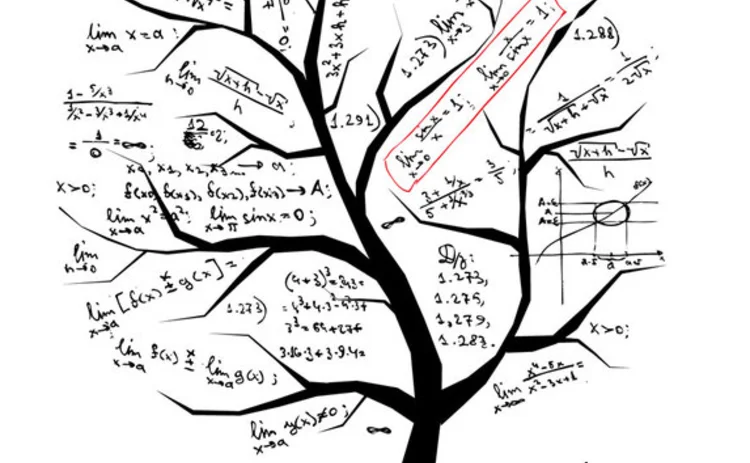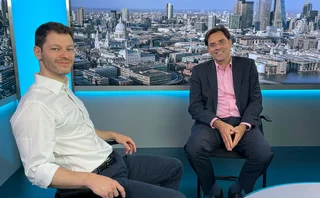
Cutting edge introduction: Monetising out-of-the-money
Investors often trade volatility via out-of-the-money options, but one Societe Generale quant shows the volatility of volatility can be monetised too – leading to large premiums

Many investors trade on the difference between implied volatility, a market expectation of volatility backed out of options prices, and the realised volatility actually observed in the market. However, a bigger premium may hide in the volatility of the volatility.
In this month's technical paper from our new Investments section, Isolating a risk premium on the volatility of volatility, Lorenzo Ravagli, a director in the cross-asset and foreign exchange quantitative strategies team at Societe Generale Corporate and Investment Bank (SG CIB), shows that a large premium lies in the volatility of volatility of out-of-the-money foreign exchange options when held against at-the-money options.
Ravagli does so by looking at the profit and loss (P&L) expansion of the smile near the money, for short-term maturities and for zero skew – an assumption reasonably valid for the forex market – for a class of stochastic volatility models. Through the expansions, it emerged the breakeven point – the value where profit starts to be made – of the second-order sensitivity of the option with respect to volatility, the so-called volga, was found to be equal to the implied volatility of volatility of the given model.
As a result, the premium based on the volga could be expressed as a differential between the square of the implied volatility of volatility and the square of the realised volatility of volatility, irrespective of the stochastic volatility model used. "If you take different models for short maturities near the money and for zero skew you find pretty much all the models converge to the same expression," says Ravagli.
Using this mathematical result, Ravagli was able to look at currency markets and show that, in the long run, the implied volatility of volatility tends to be much higher than the realised volatility of volatility, which in turn could be monetised through suitably designed trading strategies.
In his paper, Ravagli sets out to do exactly that. To observe the P&L coming from volga exposure alone, he uses a portfolio hedged against exposures to volatility and movements in the underlying, which was partly achieved by adjusting the ratio of the trades.
The portfolio consisted of euro-US dollar forex options and utilised long straddle and short strangle strategies. A straddle is a simultaneous put and call option of the same strike, while a strangle involves simultaneous out-of-the-money put and call options with different strikes but with the same maturity. If zero transaction costs were assumed, the Sharpe ratio, which measures excess return adjusted for risk, was around 10 – much higher than the typically desirable ratio of two.
"There is a huge overvaluation of out-of-the-money options. Our description of the smile, although simplistic, is very capable of capturing the fact that there is an overvaluation of those options, and this appears to be a model-independent observation," says Ravagli.
In the presence of transaction costs, one would have to rebalance the trades at a lower frequency – Lorenzo Ravagli, SG CIB
Alexey Polishchuk, a quantitative researcher at Bloomberg in New York, says this is due to inaccuracies in commonly used models. "Ravagli identifies a mismatch between implied and realised volatility of volatility in forex markets, which could be linked to deficiencies in pure stochastic volatility models that lack the local component that allows the volatility to depend on the level of the underlying," he says.
Ravagli also tests the P&L of his strategy against a portfolio of trades with exposure to volatility, and finds his method captures a much higher premium.
"Statistically, over the long run, on several assets, you can find there is a large premium. Implied volatility trades are a bit above realised volatility trades. So if implied volatility is 10.5%, realised volatility can be on average 9.5% – there is a little bit of a premium there, but it is not huge. For volatility of volatility, this premium is huge. So if implied is, let's say, 100%, the realised is on average 50% lower, so there is a factor of two between them," he says.
The only caveat to all of this, however, is the assumption of zero transaction costs. "In the presence of transaction costs, one would have to rebalance the trades at a lower frequency, which would introduce spurious terms in the P&L expansion and would require a separate treatment," he says.
In our second technical paper, CVA with Greeks and AAD, Adil Reghai, head of quantitative derivatives research for equity and commodities at Natixis in Paris, and his colleagues Othmane Kettani, a quantitative analyst for credit and equity, and Marouen Messaoud, the head of the structured derivatives quant team, propose an efficient technique for pricing the credit valuation adjustment using Monte Carlo simulations and adjoint algorithmic differentiation.
In our third technical, Correlation skew via stochastic correlation and jumps, Valer Zetocha, an equity derivatives trader at Santander in Madrid, proposes a model that captures correlation skew and matches the dynamics of worst-of puts.
Only users who have a paid subscription or are part of a corporate subscription are able to print or copy content.
To access these options, along with all other subscription benefits, please contact info@risk.net or view our subscription options here: http://subscriptions.risk.net/subscribe
You are currently unable to print this content. Please contact info@risk.net to find out more.
You are currently unable to copy this content. Please contact info@risk.net to find out more.
Copyright Infopro Digital Limited. All rights reserved.
As outlined in our terms and conditions, https://www.infopro-digital.com/terms-and-conditions/subscriptions/ (point 2.4), printing is limited to a single copy.
If you would like to purchase additional rights please email info@risk.net
Copyright Infopro Digital Limited. All rights reserved.
You may share this content using our article tools. As outlined in our terms and conditions, https://www.infopro-digital.com/terms-and-conditions/subscriptions/ (clause 2.4), an Authorised User may only make one copy of the materials for their own personal use. You must also comply with the restrictions in clause 2.5.
If you would like to purchase additional rights please email info@risk.net
More on Cutting Edge
Choosing trading strategies using importance sampling
The sampling technique is more efficient than A-B testing at comparing decision rules
A comparison of FX fixing methodologies
FX fixing outcomes are mostly driven by length of calculation window
Quantum cognition machine learning: financial forecasting
A new paradigm for training machine learning algorithms based on quantum cognition is presented
Backtesting correlated quantities
A technique to decorrelate samples and reach higher discriminatory power is presented
A hard exit threshold strategy for market-makers
A closed-form solution to derive optimal stop-loss and profit-taking levels is presented
Pricing share buy-backs: an alternative to optimal control
A new method applies optimised heuristic strategies to maximise share buy-back contracts’ value
CVA sensitivities, hedging and risk
A probabilistic machine learning approach to CVA calculations is proposed
Podcast: Alvaro Cartea on collusion within trading algos
Oxford-Man Institute director worries ML-based trading could have anti-competitive effects







